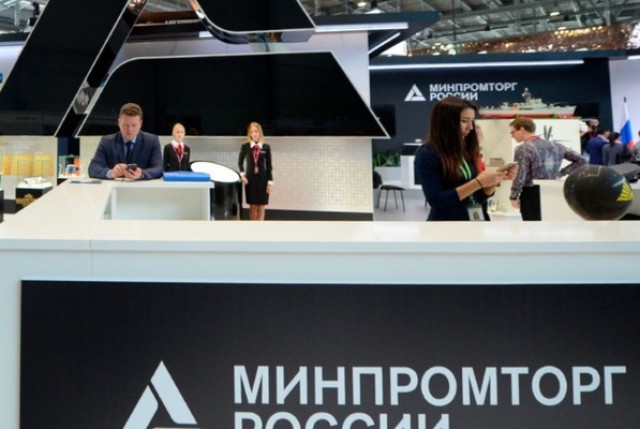The Ministry of Industry and Trade has ordered work to improve the bankruptcy mechanism of backbone enterprises. Difficulties arise due to the high key interest rate, reduced financing of concessional loans for systemically important IT companies, as well as sanctions pressure. Experts believe that the authorities want to move away from selling assets for next to nothing and layoffs to choosing primarily health measures.
As CNews found out, the Ministry of Industry and Trade is working to improve the institution of bankruptcy in relation to backbone organizations in order to preserve competencies, production and attract new investors. The agency ordered such works at the end of May 2025, allocating 22 million rubles for them, according to the public procurement portal.
It is planned to form a package of documents for making amendments to Government acts, as well as proposals on the participation of the Ministry of Industry and Trade in the bankruptcy procedures of systemically important organizations and proposals on the functions of the state fund for industrial development during such procedures.
A concept for improving the institution of insolvency will be developed, which will cover, among other things, the specifics of the application of financial rehabilitation measures and the specifics of bankruptcy proceedings. The work should be completed by November 30, 2027.
"The current economic and political situation has a significant impact on all sectors of the economy, while the financial condition of many enterprises and organizations is deteriorating, especially those that meet the criteria of the backbone organizations of the Russian economy," the terms of reference say. These enterprises include 2,326 organizations, of which 1,323 organizations are under the jurisdiction of the Ministry of Industry and Trade.
According to the terms of reference, in the event of insolvency of backbone organizations, the effect of declaring them bankrupt affects related industries and the economies of entire regions, and bankruptcy procedures should take these features into account in order to preserve competencies, production and attract new investors.
The Federal Law "On Insolvency (Bankruptcy)" provides for the specifics of bankruptcy of strategic enterprises. For such companies, there is, for example, an extended period of insolvency and the amount of unsatisfied claims compared to the initiation of bankruptcy of other enterprises, procedures for external management and bankruptcy proceedings in order to maximize the preservation of competencies and a unified property complex.
At the same time, the composition of backbone enterprises only partially coincides with the composition of strategic enterprises and organizations. Therefore, the Ministry believes that the bankruptcy mechanism should be improved.
One of the most high—profile IT bankruptcies is the insolvency of the Angstrom-T microelectronic enterprise. The company was declared bankrupt in October 2019 by the decision of the Moscow Arbitration Court. It was preceded by debt owed to VEB.The Russian Federation in the amount of hundreds of millions of dollars.
Evgeny Elfimov, General Director of Inventorus, told CNews that the bankruptcy of Angstrom-T led to the "dispersion" of the company's assets due to the lack of mechanisms for preserving the technological core. As the experts explained earlier, they hope that the state will help Angstrom preserve the assets and competencies of the enterprise.
"An example here could be I.T., where the bankruptcy of the group's oldest legal entity led to the sale of assets (for example, the software development outsourcing business was sold to Softline Holding)," he continued. "It fragmented competencies."
At the same time, the Angstrem-T company acted as the guarantor of Angstrem-T. In particular, due to these debts, in December 2024, a monitoring procedure was introduced for the Zelenograd microelectronic company Angstrom. According to the Federal Tax Service of the Federal Tax Service, Angstrom has 108 enforcement proceedings worth 147.6 billion rubles. There are also pending legal proceedings worth more than 500 million euros.
In February 2025, the industry, represented by the Association of Developers and Manufacturers (APRE), asked to exempt recipients of subsidies for the creation of microelectronics from liability. Otherwise, they face bankruptcy.
"Perhaps the government is thinking about reforming bankruptcy legislation, realizing that the current regulation has only one liquidation focus (including on systemically important enterprises)," says Sergey Lisin, managing partner of the ALX Partners Bar Association. "At the same time, this trend has historically had a bestial grin: people are fired, businesses are destroyed, assets are resold for next to nothing."
"The current economic situation in the country is not conducive to the successful development of backbone IT enterprises," Alexander Kalinin, founder of the Sovereign Mobile Initiative, a Russian IT entrepreneur and investor, told CNews. — The key rate remains high, and manufacturing IT enterprises do not have high margins. The situation with the ruble exchange rate has also changed dramatically since the beginning of the year. The purchase of components was carried out at a lower ruble exchange rate, and today the sale of finished products should be carried out at a low price. For enterprises to operate efficiently, we need a stable ruble in the long term."
"The main reasons for the deplorable situation of enterprises are the reduction in financing of preferential loans for backbone IT companies, sanctions pressure, tax claims and account blockages, as well as the general increase in the debt burden," Evgeny Elfimov, General Director of Inventorus, told CNews.
Yelfimov believes that systemically important IT companies face unique challenges: their bankruptcy means the loss of not only jobs, but also strategic competencies. "Procedures should be tightly linked to the preservation of technological potential (for example, through special managers with a technical background); provide more flexible tools for attracting investors (tax incentives, rehabilitation funds); as well as preventive monitoring based on data from the Ministry of Economic Development. If there are risks, it is necessary to initiate recapitalization," the expert concluded.




